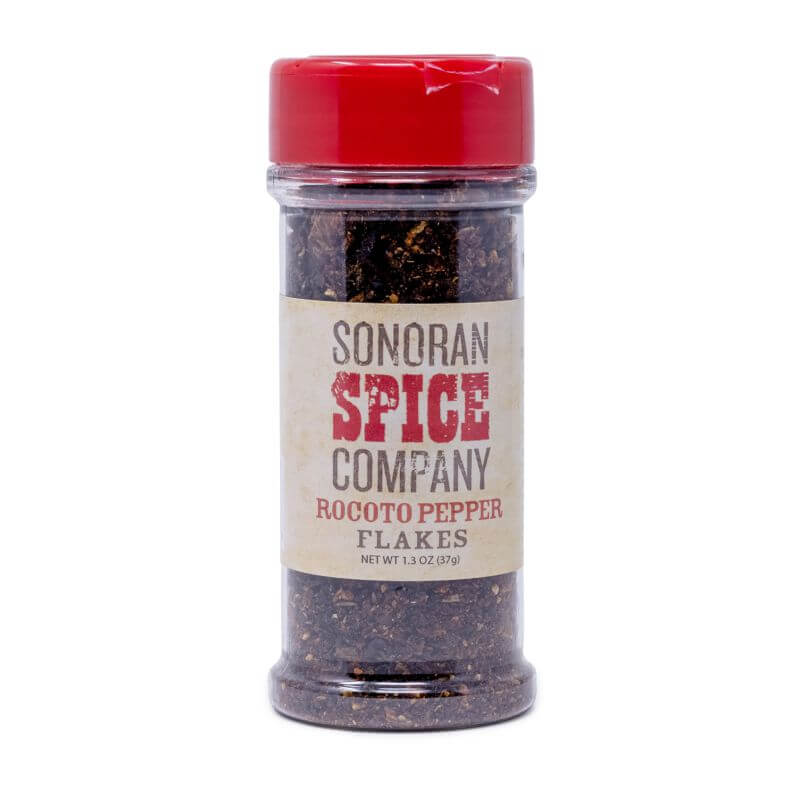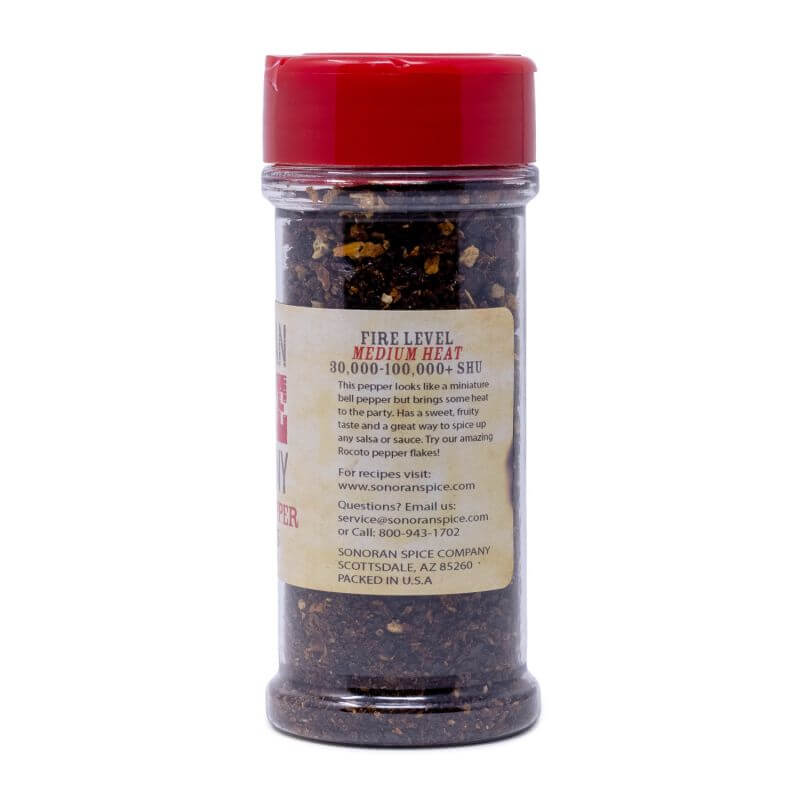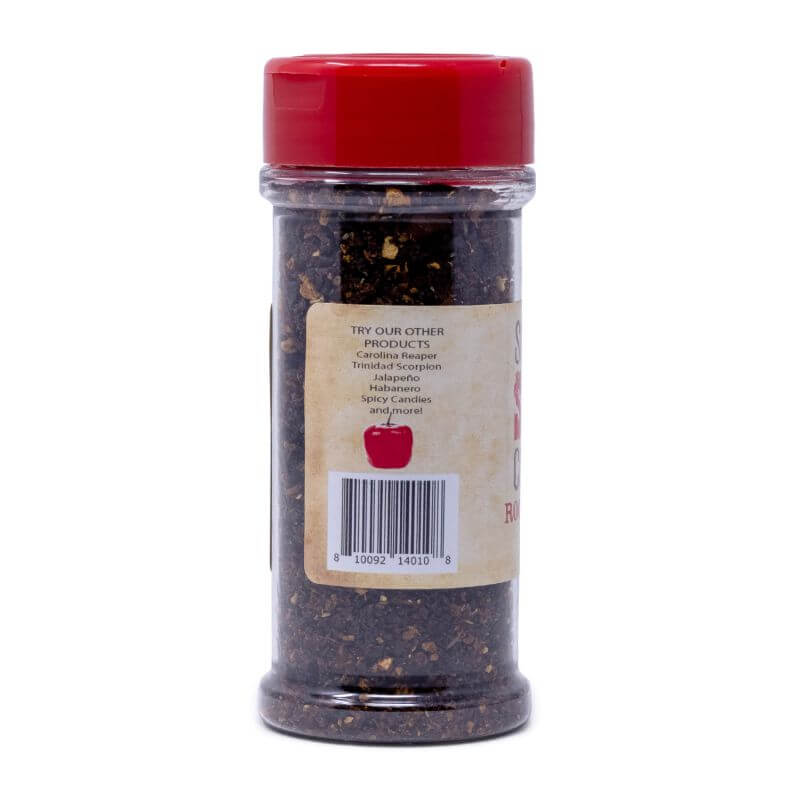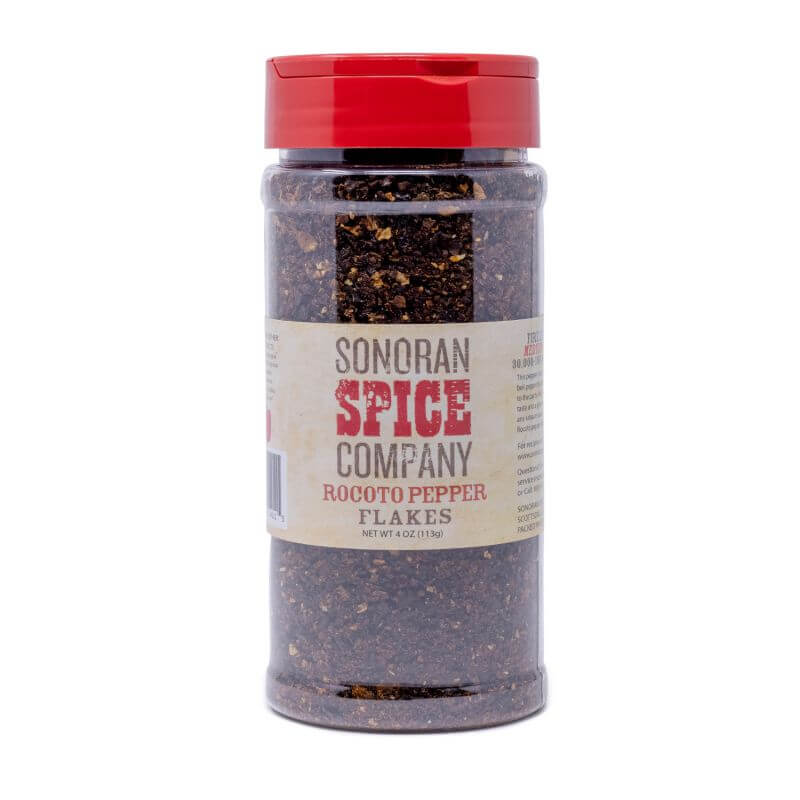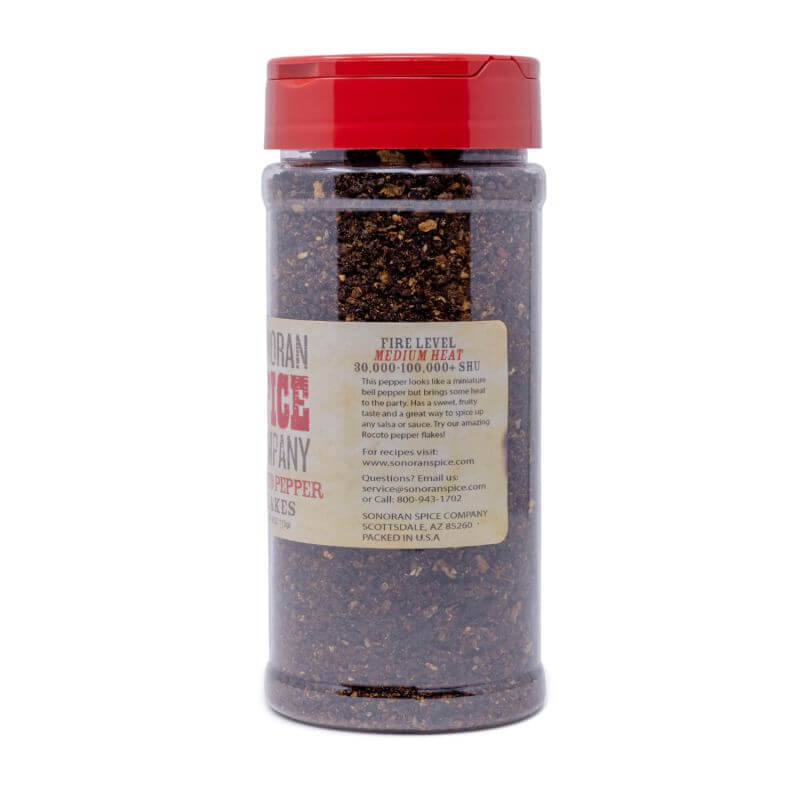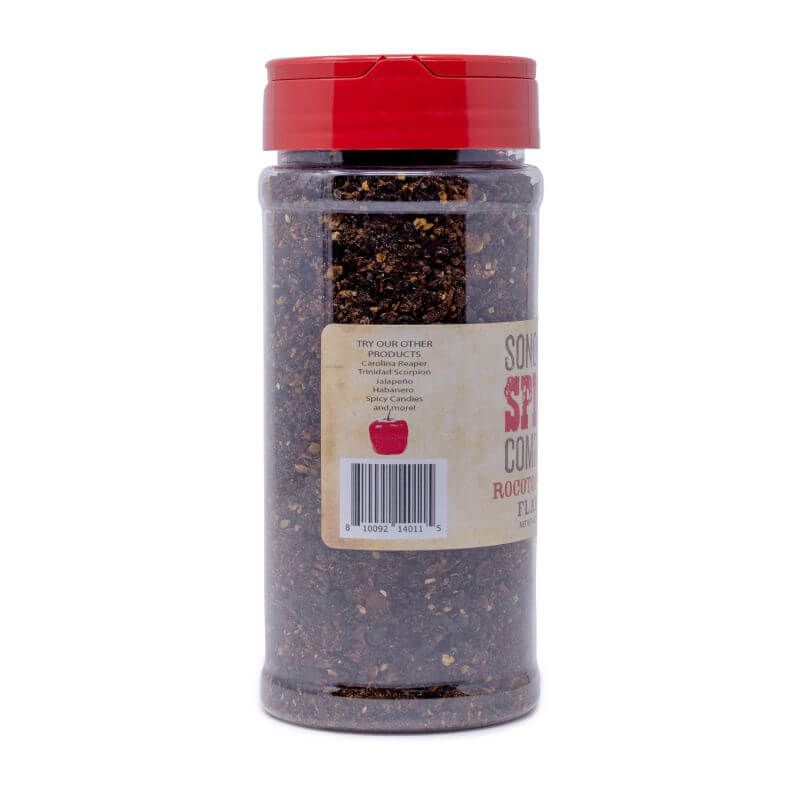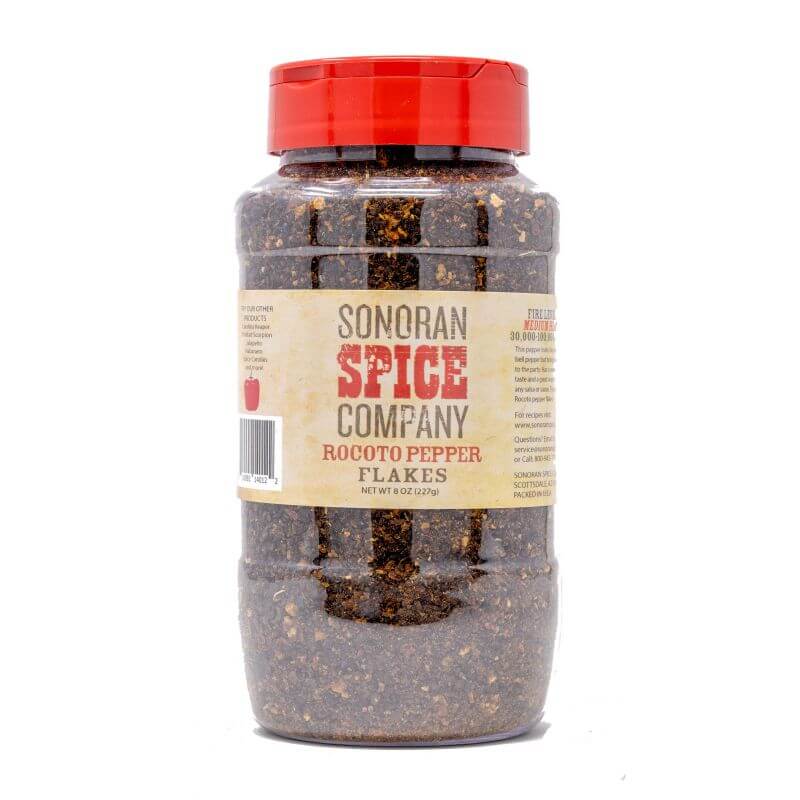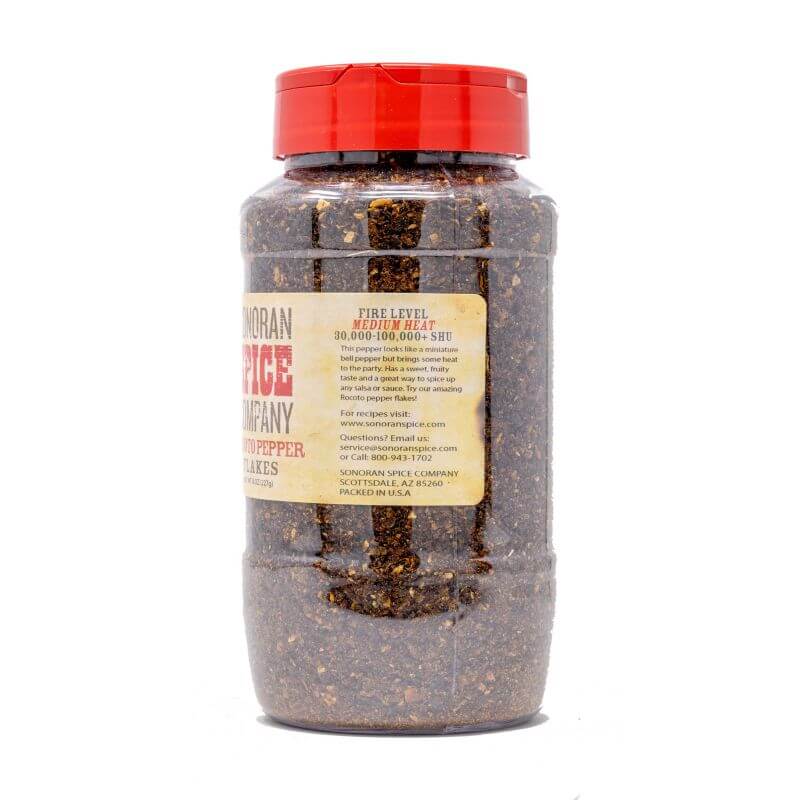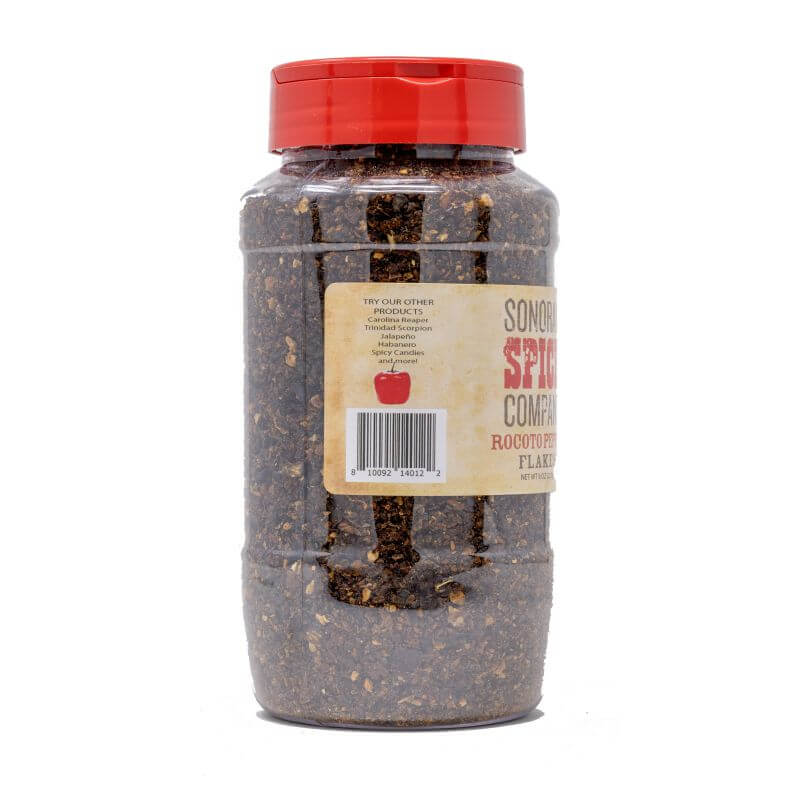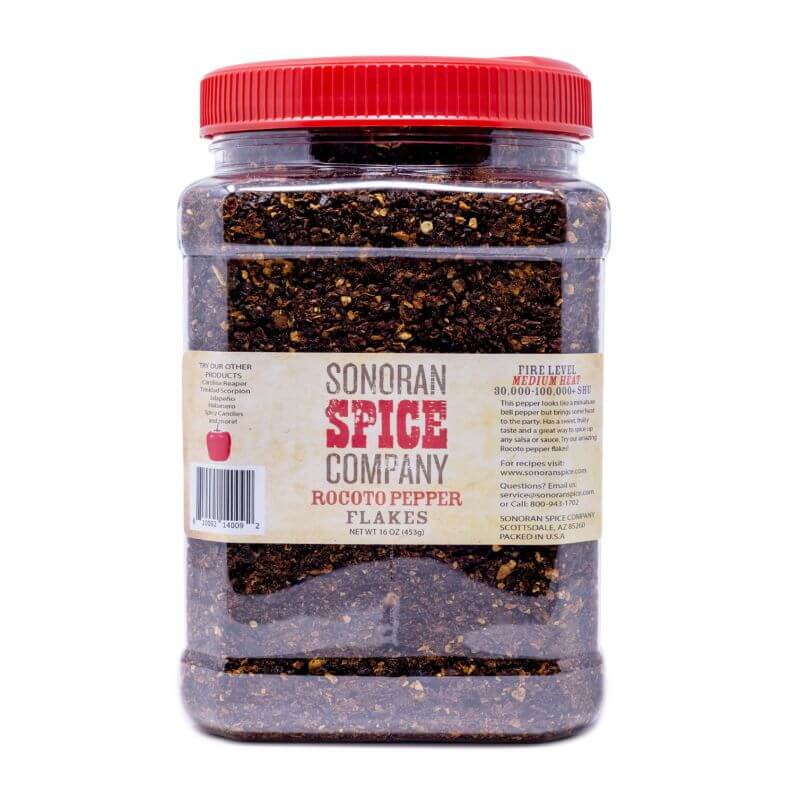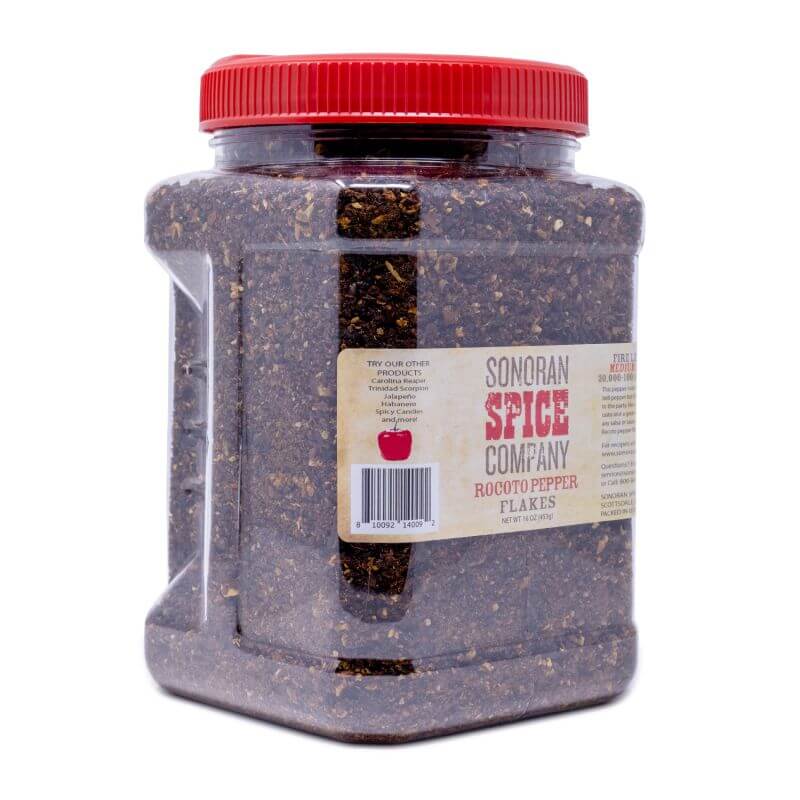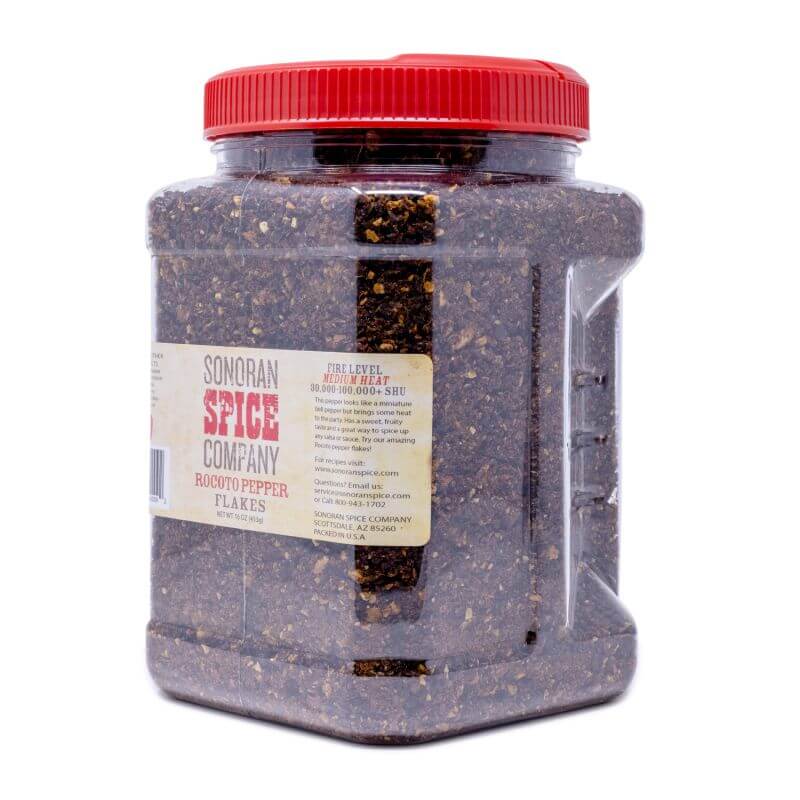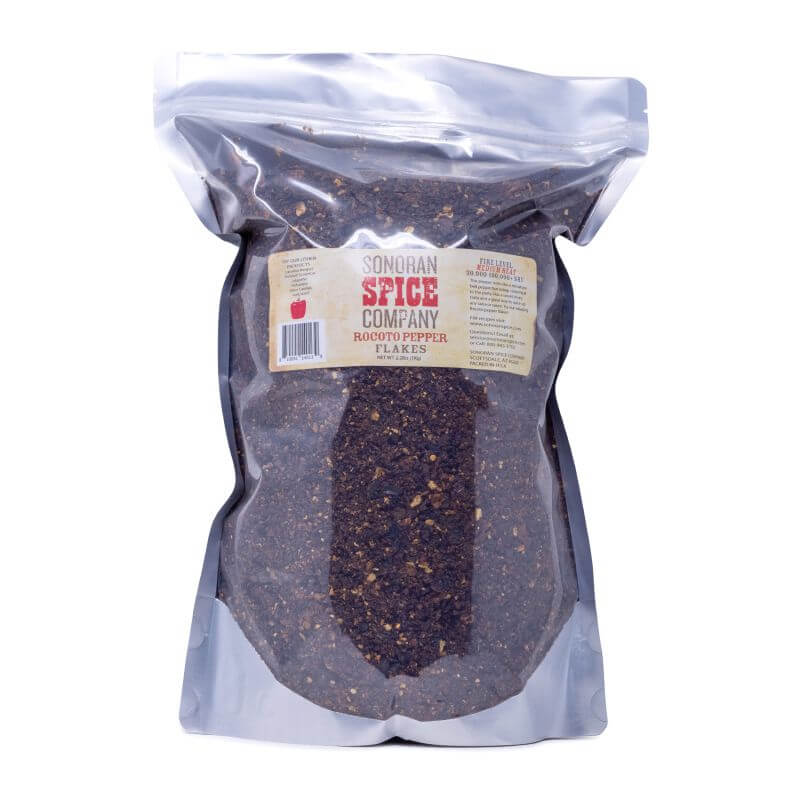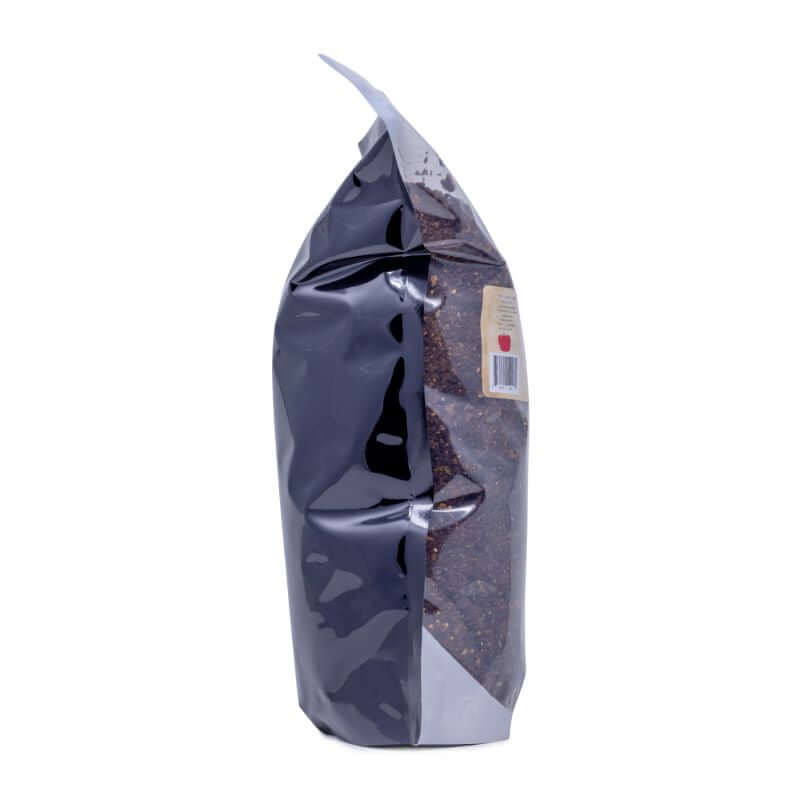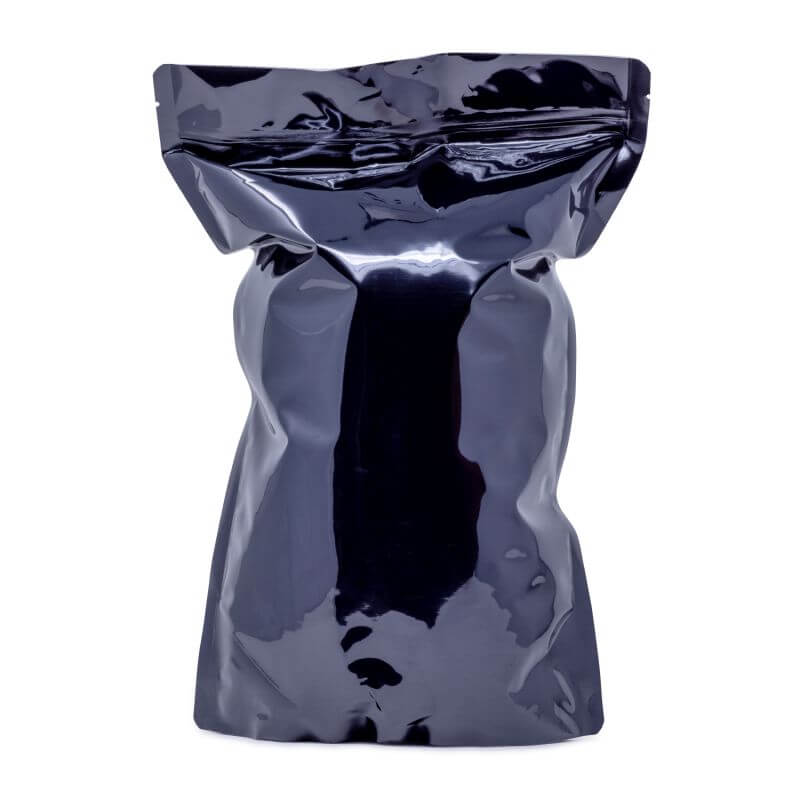Rocoto Pepper Flakes
Rocoto Pepper Flakes
Couldn't load pickup availability

If you see a Rocoto pepper, you might think it’s an ordinary bell pepper although a little smaller in size. But be careful: these are not for the faint of heart. They are much hotter than a mild, sweet bell pepper!
They are usually about the size of a golf ball, and varieties can be orange, red, and yellow. Rocoto peppers most frequently grow in South America where they originated. Because they were first cultivated thousands of years ago, it’s one of the oldest domesticated peppers to this day. The Rocoto is a crucial ingredient in Peruvian and Bolivian dishes.
The Rocoto pepper can get pretty scorching hot, but it can vary widely on the Scoville Scale—anywhere from 30,000 to 100,000 Scoville Heat Units. This makes some Rocoto peppers on par with the mildest of habanero peppers in terms of heat. In spite of its heat, the Rocoto has also been called sweet and fruity.
If you’re looking for a new way to spice up your cooking, the Rocoto pepper is a great way to do it. It’s a sure-fire way to bring the heat!
Looking for a larger amount?
We offer wholesale discounts on purchases over $500. You can learn about wholesale on our Wholesale Page.
Frequently Asked Questions about Rocoto Peppers
How hot is a Rocoto pepper?
Rocoto peppers, also known as Manzano or Locoto peppers, are significantly hot with a Scoville Heat Unit (SHU) rating that typically ranges from 30,000 to 100,000 SHU. This places them in a similar heat range as cayenne peppers but can vary, with some reaching towards the heat levels of habaneros. Their unique characteristic is not just the heat but also their thick walls and juicy, almost apple-like texture, which is different from many other chili peppers.
What recipes are Rocoto peppers typically used in?
Rocoto peppers are integral to dishes like Rocoto relleno, where they are stuffed and baked, and ceviche for added spice. They are also used in making sauces like Salsa de Rocoto, Uchucuta, and various hot sauces, as well as in soups and stews for extra heat. Their unique flavor is a signature element in Peruvian and Bolivian cuisine, enhancing both taste and heat.
What are Rocoto peppers?
Rocoto peppers, or Manzano peppers, are a variety of chili pepper from the Andean region, with a distinctive round shape and thick walls. They turn red, yellow, or orange when ripe and have a fruity flavor combined with significant heat, ranging from 30,000 to 100,000 Scoville Heat Units. Their black seeds and hairy plant stems set them apart from other peppers.
Learn more about Rocoto Peppers with our Rocoto Pepper Guide in our blog.
Share
